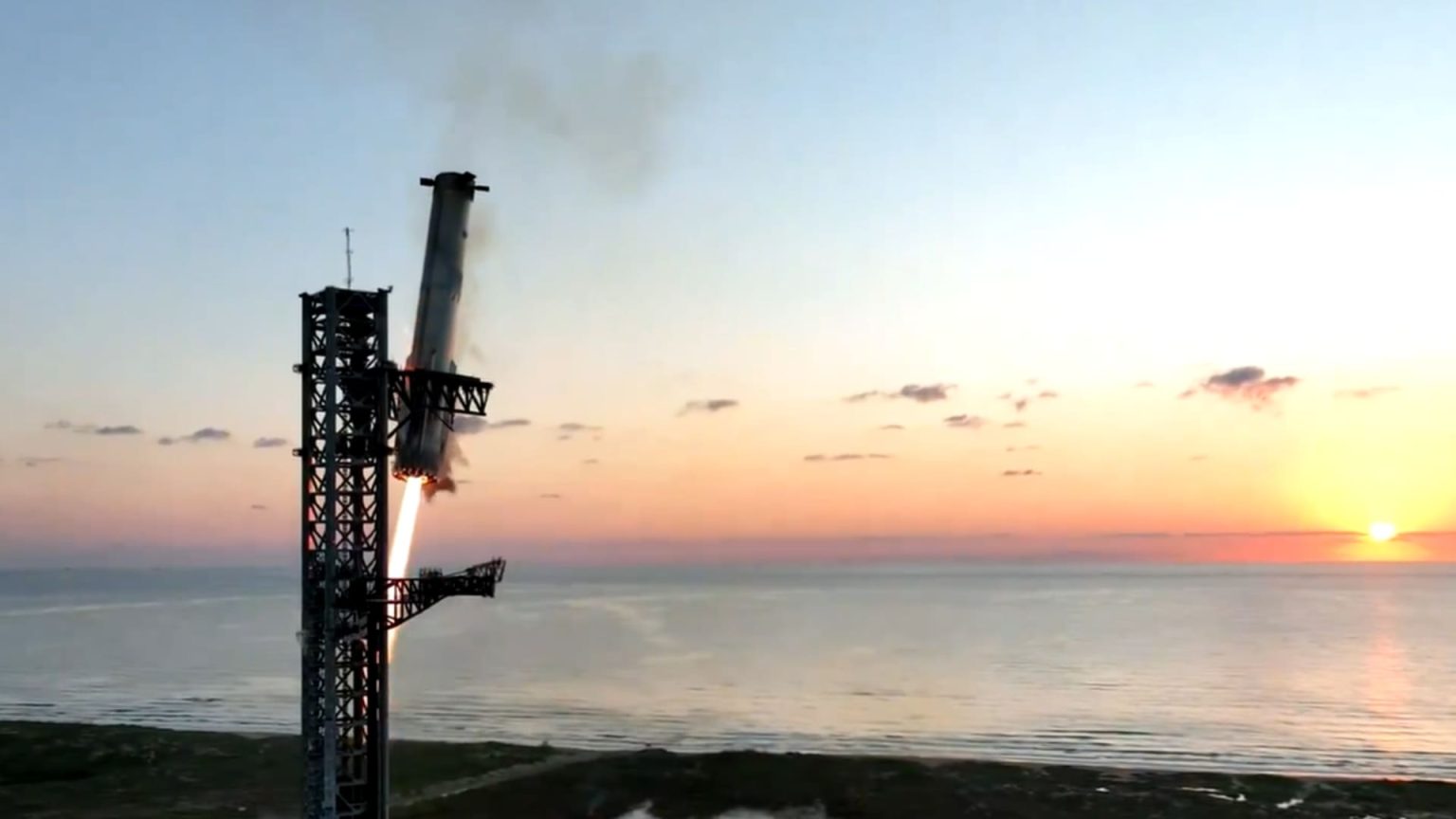SpaceX achieved a major milestone in its Starship rocket program with the successful launch and catch of the rocket’s more than 20-story tall booster. This marks a significant step toward SpaceX’s goal of creating a fully reusable rocket system. The launch took place on Sunday morning from the company’s Starbase facility near Brownsville, Texas. The booster, known as “Super Heavy,” returned to land on the arms of the company’s launch tower nearly seven minutes after launch, leaving observers in awe of the accomplishment.
Astronaut Chris Hadfield congratulated SpaceX on the achievement, noting that it represents a significant advancement in human capability. Starship, traveling halfway around the Earth before reentering the atmosphere and splashing down in the Indian Ocean, received a license from the Federal Aviation Administration for its fifth flight. There were no crew members on board the flight, as SpaceX continues to test the system’s capabilities.
The Starship rocket system has undergone several spaceflight tests so far, with each test flight achieving more milestones than the last. The goal is to make the rocket fully reusable and revolutionize space travel for both cargo and human missions. SpaceX has also secured a contract from NASA to use Starship as a crewed lunar lander as part of the Artemis moon program, further highlighting the rocket’s importance in future space endeavors.
The company faced challenges in launching the fifth flight earlier than anticipated, criticizing the FAA for delays in approvals due to “superfluous environmental analysis.” Despite this, SpaceX remains committed to its mission of pushing the boundaries of space exploration. The successful booster catch during this fifth flight demonstrates the company’s dedication to making the rocket fully reusable and maximizing its efficiency in future missions.
Starship, towering at 397 feet when fully stacked on the Super Heavy booster, is the tallest and most powerful rocket ever launched. The booster features 33 Raptor engines at its base, producing 16.7 million pounds of thrust, significantly more than NASA’s Space Launch System rocket. Starship itself has six Raptor engines powered by liquid oxygen and liquid methane, requiring over 10 million pounds of propellant for launch. SpaceX’s engineers have spent years preparing and testing for the booster catch attempt, with the success of this milestone setting the stage for future missions.
In conclusion, SpaceX’s latest success in the Starship program represents a significant achievement in the company’s quest for fully reusable rockets and groundbreaking space exploration. The launch and catch of the Super Heavy booster during the fifth flight mark a major milestone in advancing human capability and pushing the boundaries of space technology. With plans for hundreds of Starship missions in the future, SpaceX continues to lead the way in redefining space travel and opening up new possibilities for missions beyond Earth.













